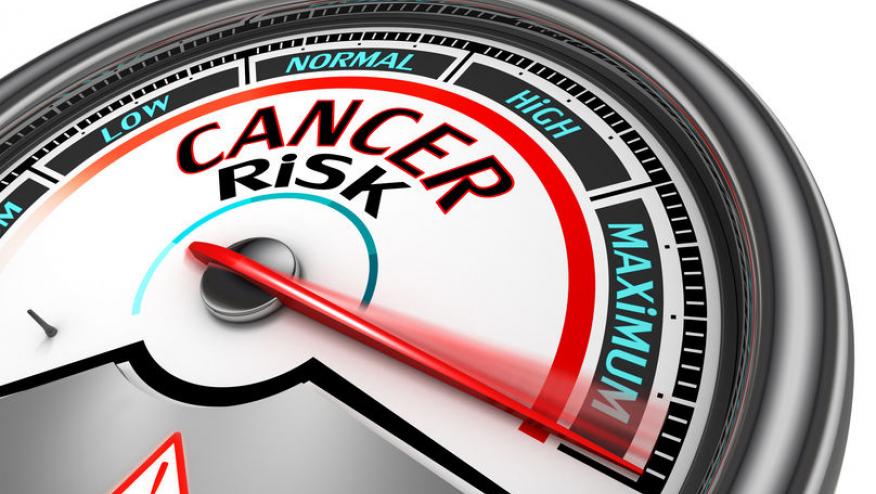Lymphoma in RA: Disease Activity Matters Save

Among patients with rheumatoid arthritis (RA), the strongest risk factors for the development of lymphoma were disease activity and severity, French researchers found.
In a multivariate analysis, having a high Disease Activity Score in 28 joints (DAS28) at baseline conferred twice the risk for lymphoma, with an odds ratio of 2.09 (95% CI 1.41-3.38), according to Gaetane Nocturne, MD, of Hôpital Bicêtre in Ile-de-France, and colleagues.
And the presence of erosions at baseline -- suggesting a more severe course of RA -- was associated with an almost 10-fold greater risk on the multivariate analysis, with an odds ratio of 9.87 (95% CI 3.51-31.49), the researchers reported online in RMD Open: Rheumatic & Musculoskeletal Diseases.
Patients with RA have a recognized 1.5- to three-fold increased risk for lymphoma, for reasons that remain poorly understood, with some previous research suggesting a link between RA disease activity and the development of lymphoma. "However, inflammation per se is not the driver of lymphomagenesis because other inflammatory rheumatic diseases such as autoinflammatory syndromes, spondyloarthritis, and psoriatic arthritis are not associated with increased risk of lymphoma," Nocturne and colleagues wrote.
A potential role for RA treatments on lymphoma risk has also been postulated, but the results of previous studies have been contradictory. Some reports have shown increased risks with methotrexate and tumor necrosis factor (TNF) inhibitors, but others found no increase or even decreased risks with biologic therapies.
To further examine the characteristics and risk factors for lymphomas developing in RA patients, the researchers conducted a case-control study of patients enrolled in French RA registries who had been followed for at least 10 years. The 54 cases of patients who developed B-cell non-Hodgkin's or Hodgkin's lymphoma were matched by age with 108 controls who also had 10 years of follow-up.
Half the patients had diffuse large B-cell lymphoma, with smaller numbers having follicular and marginal zone lymphomas. There were three cases of Hodgkin's lymphoma, and four patients were positive for Epstein-Barr virus.
Lymph node involvement was present in almost 60% of the patients, solid organ involvement in one-quarter, and the bone marrow was involved in 20%. One-third had limited stage I disease, while an additional third had widespread stage IV disease.
While only 32% of the overall cohort (cases plus controls) were men, 50% of the lymphoma cases occurred in males. Mean age at lymphoma diagnosis was 64, and 91% were positive for anti-citrullinated peptide antibodies (ACPA) or rheumatoid factor (RF). Erosions were seen on baseline radiographs in 82% of cases compared with 54% of controls, and DAS28 was 4.09 among cases compared with 2.54 for controls.
Mean follow-up after lymphoma diagnosis was 5.2 years, during which time 14 patients died.
On univariate analysis, factors that were associated with lymphoma were:
- Male sex, OR 3.3 (95% CI 1.7-6.7, P=0.0006)
- ACPA positivity, OR 5.1 (95% CI 2-15.7, P=0.0006)
- Erosions, OR 3.8 (95% CI 1.7-8.3, P=0.0005)
- DAS28, OR 2 (95% CI 1.5-2.7, P<0.0001)
In addition, DAS28 was significantly higher in men than women (3.24 vs 2.91, P<0.0001).
With regard to treatments, no association was seen on univariate or multivariate analysis for lymphoma risk for methotrexate, TNF inhibitors, or the number of biologics used. On the univariate analysis, increased risks were seen for previous exposure to hydroxychloroquine (OR 3.1, 95% CI 1.5-6.7), sulfasalazine (OR 3.1, 95% CI 1.4-6.6), and older therapies such as gold salts (OR 3, 95% CI 1-9), but these were no longer significant in the multivariate analysis.
Two-thirds of patients with lymphoma underwent chemotherapy, and 20% were given rituximab (Rituxan), which showed efficacy for both lymphoma and RA. Five-year survival was similar to what has been seen in patients with lymphoma without RA.
"The association between lymphoma and radiographic erosions ... highlights the association between disease severity and risk of lymphoma; moreover, because erosive and thus more severe RA is associated with high disease activity, this result is also an indirect argument favoring the role of disease activity in lymphomagenesis," the researchers wrote.
The finding that the presence of autoantibodies, particularly ACPA, was associated with lymphoma further underscores the importance of disease activity and joint damage in lymphoma development, as ACPA positivity is generally considered a poor prognostic factor in RA, the team explained.
The association with lymphoma for ACPA and RF positivity on univariate analysis may also suggest a possible role for autoimmunity in lymphomagenesis, the authors added. "A precise identification of the factors involved in B-cell activation is a challenge in the search for new therapeutic targets, both in the field of autoimmunity and oncohematology."
A limitation of the study, the investigators said, was its retrospective design.
Source Reference: Kedra J, et al "Lymphoma complicating rheumatoid arthritis: results from a French case-control study" RMD Open 2021; doi:10.1136/rmdopen-2021-001698.










If you are a health practitioner, you may Login/Register to comment.
Due to the nature of these comment forums, only health practitioners are allowed to comment at this time.